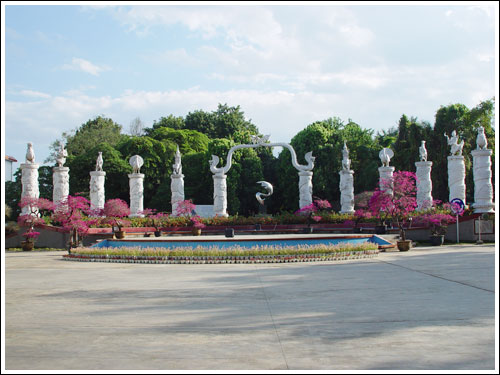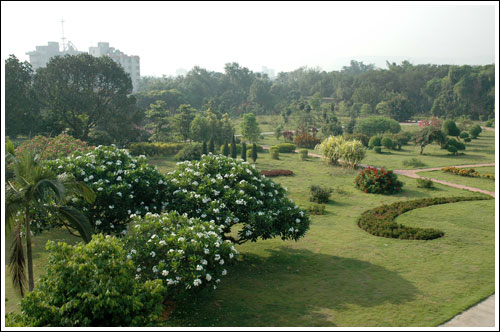

Botanical Garden of Xishuangbanna South Medicine, founded in 1959, is located in Jinghong city of the capital of Xishuangbanna prefecture, Yunnan province and it is also a branch of Institute of medicinal Plant Development, Chinese Academy of Medical Science in Beijing China. The garden covers an area 20 hectares including 3 hectares artificial lake. The mainly objectives of the garden include germplasm conservation of tropical botany, introduction and cultivation, scientific research, public science education and sightseeing for tourist.
To date, the garden has a collection of about 1000 tropical plant species and varieties from different parts both from home and abroad. Among these include Amomum villosum, Sterculia lychnophora, Amomum kravanh, Santalum album, Dracaena cambodiana, Senegalia catechu, Cinnamomum cassia, Cinchona succirubra, and so on, over thirty noble medicinal plants in southern China. In addition, the plant herbarium room of the garden has a collection of over 10000 accessions. In 2000 years, the garden was awarded a title ‘Base of Public Science Education and Popularization’ by the government of Yunnan province.

Botanical Garden of Xishuangbanna South Medicine has been planed and constructed following a mainly clue that is traditional Chinese medicine and folk culture. Simultaneously, modern ecology, landscape architecture, landscape science, systematic botany, tourism, etc are also considered in the garden program.While entering the garden, the first site is the plaza of medicine culture where has a lifelike sculpture showing the development history of Dai medicine culture, and then are ten regions with several characteristics including the mysterious trail of medicinal plant, shady pathway, Dai medicine, orchid room, herb area, areca woods, germplasm garden of Scaphium lychnophornm, and Xiuyuan. These abundance plant resources and good garden distribution display the medicine fortune of the nationality of Dai in Xishuangbanna. The science and technology house of tropical medicinal plants is located in the south-west of the garden where you can further learn the splendent history of the folk medicine culture.